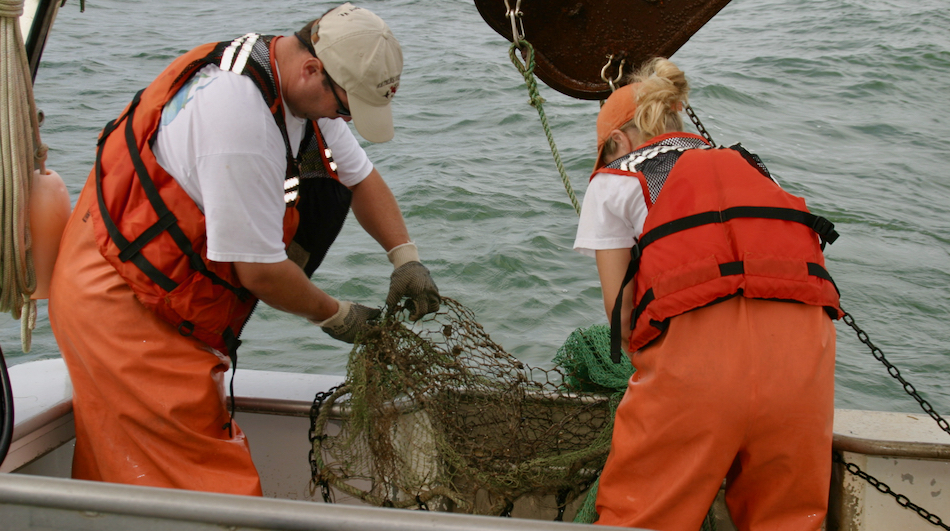Big fish eat smaller fish, but only if there are smaller fish to eat. A new study led by researchers at the College of William and Mary’s Virginia Institute of Marine Science maps the conditions most suitable for key species of forage fishes in the Chesapeake Bay, offering guidance for any future efforts to protect or restore the habitat required to yield sufficient prey for predatory fishes such as striped bass. The graduate school’s campus is at Gloucester Point.
Lead author on the study, which appeared in the October issue of “Frontiers in Marine Science,” is Dr. Mary Fabrizio, a professor and chair of Fisheries Science at VIMS. Co-authors are fellow VIMS researcher Troy Tuckey, along with Drs. Aaron Bever and Michael MacWilliams of Anchor QEA, LLC. Bever is a VIMS alum.
“Small fishes such as bay anchovy are important components of the diets of predatory fishes in Chesapeake Bay, but factors that affect local abundances of these forage fish have been largely unexplored,” said Fabriz...
To view the rest of this article, you must log in. If you do not have an account with us, please subscribe here.

